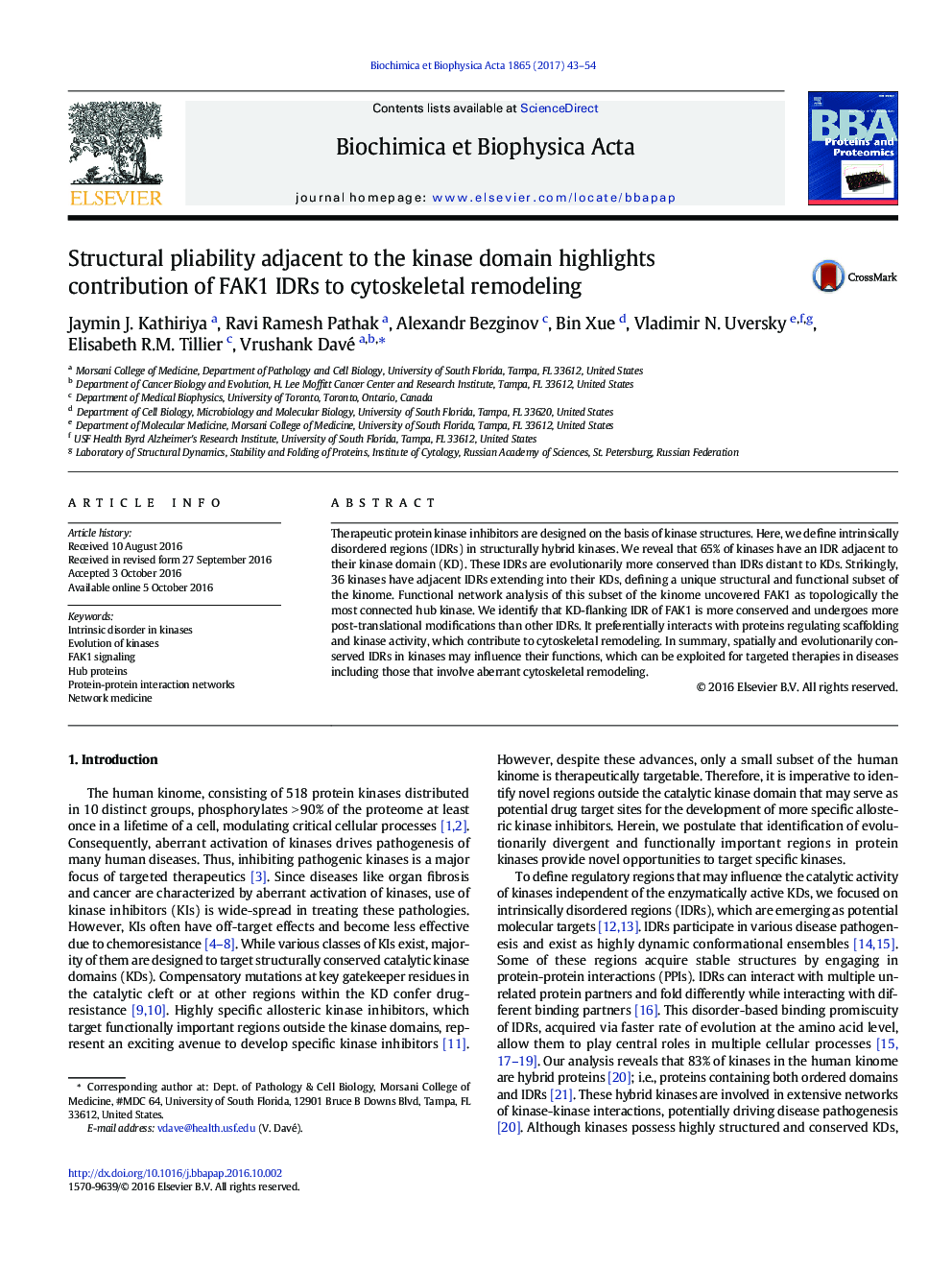| Article ID | Journal | Published Year | Pages | File Type |
|---|---|---|---|---|
| 5132057 | Biochimica et Biophysica Acta (BBA) - Proteins and Proteomics | 2017 | 12 Pages |
â¢Human Kinome has a variable presence of intrinsically disordered regions (IDRs).â¢IDRs adjacent to the kinase domains observe variable evolutionary pressure.â¢FAK1 is a central hub of a network of Kinases with IDRs adjacent to kinase domain.â¢FAK1 IDRs are spatially conserved across evolution.â¢FAK1 relays cytoskeletal remodeling preferentially through IDR-interacting proteins.
Therapeutic protein kinase inhibitors are designed on the basis of kinase structures. Here, we define intrinsically disordered regions (IDRs) in structurally hybrid kinases. We reveal that 65% of kinases have an IDR adjacent to their kinase domain (KD). These IDRs are evolutionarily more conserved than IDRs distant to KDs. Strikingly, 36 kinases have adjacent IDRs extending into their KDs, defining a unique structural and functional subset of the kinome. Functional network analysis of this subset of the kinome uncovered FAK1 as topologically the most connected hub kinase. We identify that KD-flanking IDR of FAK1 is more conserved and undergoes more post-translational modifications than other IDRs. It preferentially interacts with proteins regulating scaffolding and kinase activity, which contribute to cytoskeletal remodeling. In summary, spatially and evolutionarily conserved IDRs in kinases may influence their functions, which can be exploited for targeted therapies in diseases including those that involve aberrant cytoskeletal remodeling.
Graphical abstractDownload high-res image (277KB)Download full-size image
